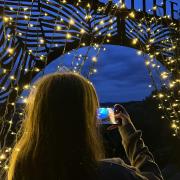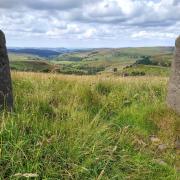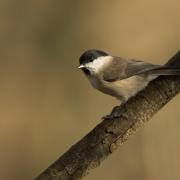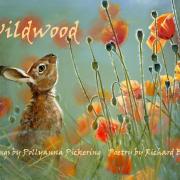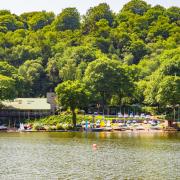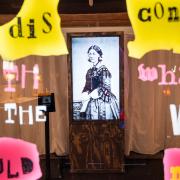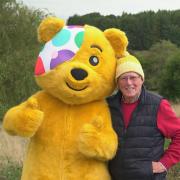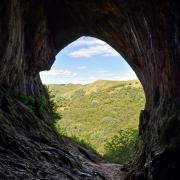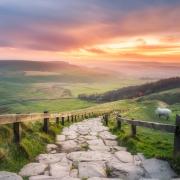Over a century has passed since the death of celebrated naturalist and author William Henry Hudson. Biographer Conor Mark Jameson describes the occasion Hudson came to the Peak District in search of an elusive bird.
H e arrived on a ship as a penniless, unschooled immigrant in 1874 but, by the time he died in 1922, W. H. Hudson was regarded not only as one of our finest writers on nature, but one of our most eminent writers per se.
So great was the esteem in which he was held by the public and fellow authors including John Galsworthy and Virginia Woolf, a bird sanctuary and monument were established in his honour in London’s principal royal park. He had also been the only man in the Notting Hill drawing room where a small army of women, led by Eliza Phillips, launched what we know today as the Royal Society for the Protection of Birds, with over a million members.
Hudson remained deeply involved in the Society and its campaigns throughout his life and left almost all his earnings to the cause. In the words of his dear friend the war poet Edward Thomas, W. H. Hudson ‘did an eccentric thing for an English naturalist: he was born in South America’.

Hudson had lived until age 32 on the Pampas of Argentina. Another curious thing about Hudson is that although he would spend nearly 50 years in England, this devotee of nature and the outdoors never lived anywhere but London – which he frequently cursed for its sooty air, crowds and traffic noise – and ventured north only occasionally.
The Edwardian decade was a golden age for Hudson, who found fame and some fortune from his writing only late in life.
That era ended on May 6 1910 with the death oftheKing – who was exactly Hudson’s age. A week later, and with his 70th year approaching, Hudson was gripped with the desire ‘just to see and hear a bird I couldn’t get a sight of anywhere nearer home than the Peak District’.
That species in question was the ring ouzel. ‘Certain birds at certain times take possession of and hold us,’ he wrote, explaining his mission. Try as he might, he had been unable to find the song described in any books.
For Hudson, the Peak District in a sense was to London what the uplands of Patagonia are to Buenos Aires, near to which he spent his childhood and young adult life.
After poring over a map in his south-west London home Hudson plotted his route, before taking the train to Buxton – then at its height as a fashionable and thriving spa town nestling in the hills.
He brought his Sunbeam bicycle, and found this busy spa town environment, like London, ‘much tortured with motor cars’.
For accommodation, and peace, he chose a typically basic farmhouse on the moors, at Axe Edge. Hudson disliked formal hotels and guest houses, preferring to lodge with local families to hear their tales and sample their way of life.
With the higher altitude and latitude, he found springtime several weeks behind the one he had left behind in the south.
His movements can be pieced together from his letters and other writing about the trip. Keen to integrate, in typical Hudson fashion he befriended and had lunch with a local vicar, ‘a man whose fine features, classic physique and magnificent beard filled me with a great admiration’.
Hudson wrote a lot of letters from Goyt’s Moss Farm, which was so isolated he would not have had many distractions in the evenings. His remarks in these letters give a flavour of his chat with the vicar, who asked him his business locally.
‘I am here to watch a certain species of bird common in some parts of England, and nowhere nearer to London than the Peak District,’ Hudson reported, ‘so I’ve come 130 miles just to look at one little bird!’
The vicar confessed himself no expert on birds. He had, however, noticed one recently, and should like very much to know what it was. ‘Perhaps it was a carrion crow or a rook’, he conjectured, ‘but it was exceptionally big – and very black.’

The vicar might have been describing a raven, but these had been removed from most of the farmed landscape of England.
‘One meets with many disappointments when asking for information about the bird life of any locality,’ Hudson wrote. ‘One is apt to forget that such knowledge is not common, that it is easier to find a poet or a philosopher in any village than a naturalist.’ In any case, ‘there was no time for brooding on such problems; my quest was birds, not men.’
Between rain showers, Hudson explored the challenging terrain on foot and bicycle, returning in the evening to write, including a letter to the great portrait artist William Rothenstein and his wife Alice.
‘Goyt’s Moss is a hamlet of three or four cottages in a valley or cleugh of the mountains, a very lovely wild desolate spot,’ he told them. ‘At all events here is no road, only a rough old stony track, and the postman comes only three times a week.’
There was a stand of beech trees, stunted and broken by gales, near his lowroofed cottage lodgings, in an otherwise treeless place.
‘These were a great attraction to the moorland cuckoos and their morning meeting-place,’ Hudson wrote.
‘From half-past three they would call so loudly and persistently and so many together from trees and roof as to banish sleep from that hour.’
Hudson’s health was often fragile, but it didn’t stop him carrying his bicycle over stony paths and streams in search of his ouzels. He scanned the moors with his field glass, noting the birds that were missing. The fluting, far-carrying sound of a curlew raised his spirits, just a little.
‘In all this Peak District you will not find a larger bird than the curlew,’ he lamented. ‘The only one left alive by the Philistines and destroyers. Not a buzzard, not a harrier, not a raven, or any other species which when soaring would seem an appropriate object and part of the scenery in these high wild places.
’ On a happier note, Hudson found the bird he came for. ‘I was here on a special visit to this species; he was more in my mind than the golden plover or any other. I came to be more intimate with him – to have my ring-ouzel day and mood… I got a lodging at a hovel in a place where I have him close by.
The bird was quite common on the hill where I stayed – one pair had their nest within a few minutes’ walk of the cottage and I got to know the bird intimately during my stay.’
The ring ouzel is migratory and found in spring and summer on the higher hills of the British Isles. It was also known as the mountain blackbird. Apart from its white bib, it looks like its familiar lowland relative. After listening to his local ouzel’s recital, Hudson ventured further afield, and found 40 or 50 breeding pairs.
What is exemplified by this Derbyshire expedition is how patient Hudson was as an observer, how long he was prepared to give to being the audience for this one species. Hudson was an extraordinarily dedicated watcher and listener.
The conservation movement Hudson and his colleagues helped to found has addressed some of the losses he witnessed – he would be delighted to find restored some species wiped out by his contemporaries – while other challenges remain.
The task of saving migrant songbirds like the ring ouzel is today a shared, international one. The Anglo-Argentine Hudson recognised that better – and sooner – than most..
Conor Mark Jameson is the author of Finding W.H. Hudson. Find it at pelagicpublishing.com/products/ finding-w-h-hudson.





